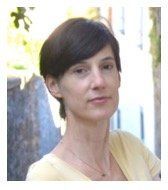Research Explained: Okur-Chung Neurodevelopmental Syndrome-linked CK2x variants have reduced kinase activity (2021)
Authors : Dominguez I, Cruz-Gamero JM, Corasolla V, Dacher N, Rangasamy S, Urbani A, Narayanan V, and Rebholz H
Research Explained By : Dr. Heike Rebholz
Research Explained Summary
:
All patients diagnosed with OCNDS share one thing in common: they have one change in the gene that encodes for a protein called CK2. There are two genes that encode the genetic blueprint for CK2 in every cell, and in OCNDS one of them has such a change, also called mutation. We know that approximately 30 patients are reported in scientific journals, but that there are many more patients all over the world. Thus far, 16 different genetic changes, all in the same gene, have been described in the literature.
However, to date, nobody knew how this change actually affected CK2 itself, how and if it altered its ability to perform its function in every cell of our body.
We wanted to answer this question and, to achieve this, produced the unmutated and 16 different “mutated genes” which we then expressed in bacteria and also in cultured mammalian cells. We found a reduction of activity for all of the 16 CK2 mutations. CK2 is a kinase, that is a protein whose job is to alter other proteins in the cell by adding a phosphate group to them. Thus, our findings indicate that, in OCNDS, the mutation renders CK2 less able to perform such phosphorylation events.
It is encouraging, however, that this loss of activity does not have a large overall impact on the general health of cells used in our studies and that important proteins that are known to be modified by CK2 are not necessarily affected. What that means is that at least in some cases, the remaining healthy and “unmutated” version of CK2 can compensate for the one, “mutated” copy of CK2.
We further found that very few of the mutations also lead to changes in the localization of CK in the cells.
While our findings are very basic and not directly applicable to the clinic, the question of CK2 activity had to first be addressed and will allow for further studies. The search now focuses on identifying the actual proteins that are affected by the mutation and are responsible for the disease-characteristic symptoms. This will bring us a big step closer to better understanding what happens in the condition and ultimately will identify proteins, which can be therapeutically targeted and lead to new treatments.
If you have any further questions, please contact Jennifer Sills at
jennifer@csnk2a1foundation.org

For her post-doctoral work, she joined the Laboratory of Nobel laureate Dr. Paul Greengard at Rockefeller University New York where her interest in CK2 was ignited. She found that CK2 modulates certain neurotransmitter receptors in the brain which led to work in the fields of Parkinson’s disease and major depression as well as the generation of conditional knockout mice.
She continued this research while being a Research Assistant Professor at CUNY Medical School (Dept of Physiology, Pharmacology and Neuroscience), and since last year as Group leader of the Laboratory of Signaling mechanisms in neuorological disorders at the Institute de Psychiatrie et de Neurosciences de Paris, Universite de Paris.
